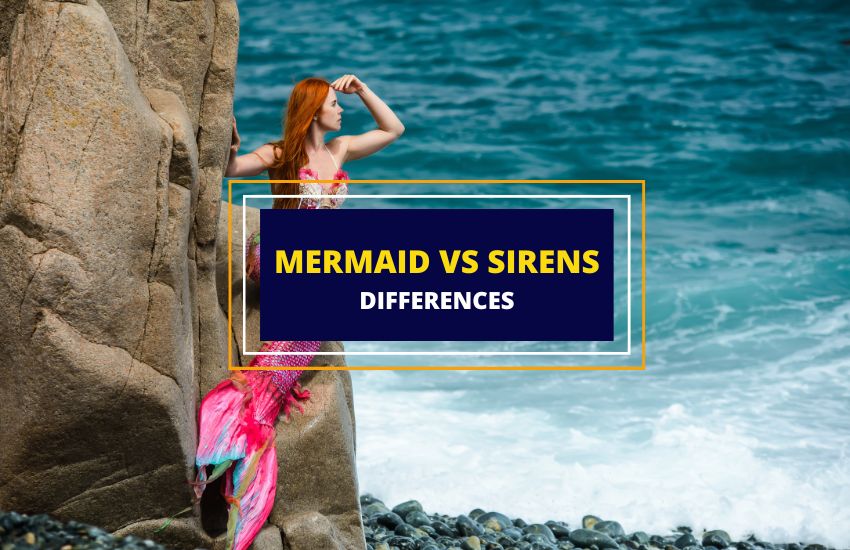
Table of Contents
Sirens and Mermaids, two mythical creatures that have captivated the human imagination. They’re typically portrayed as seductive fishy females who lure men to distraction. They’re beautiful, have amazing singing voices that drive those who hear them to madness and overall, they’re magical and mystical.
But are sirens and mermaids the same? Not quite.
The myths show that these two creatures originated in completely different cultural traditions. But at some point, sirens became conflated with mermaids. Let’s take a closer look.
Where Did Sirens and Mermaids Originate?
The origins of both mermaids and sirens are shrouded in antiquity, making it difficult to determine which came first. Both creatures appear in ancient stories and their mythologies evolved over time.
What we do know is that at the start, sirens and mermaids looked nothing like each other.
Sirens
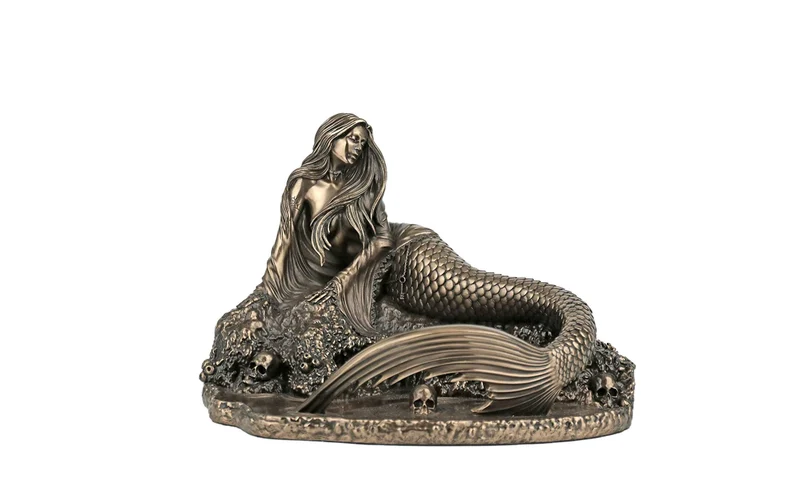
The first mention of sirens dates back to Homer’s 8th-century Greek epic, “The Odyssey.” Interestingly, Homer never provided a physical description of sirens in his work. But somehow, subsequent interpretations portrayed sirens as fantastical creatures with the body of a bird and the head of a woman, much like harpies – another type of Greek mythical creature.
As bird women, sirens had human faces, scaled feet, and enormous wings. They also had a mystical power: the ability to hypnotize their victims with enchanting songs. They loved music so they were often shown holding a musical instrument.
But because they lured sailors to their death, sirens became associated with temptation, destruction, death and despair. They became known as evil creatures who lived to do harm.
Mermaids
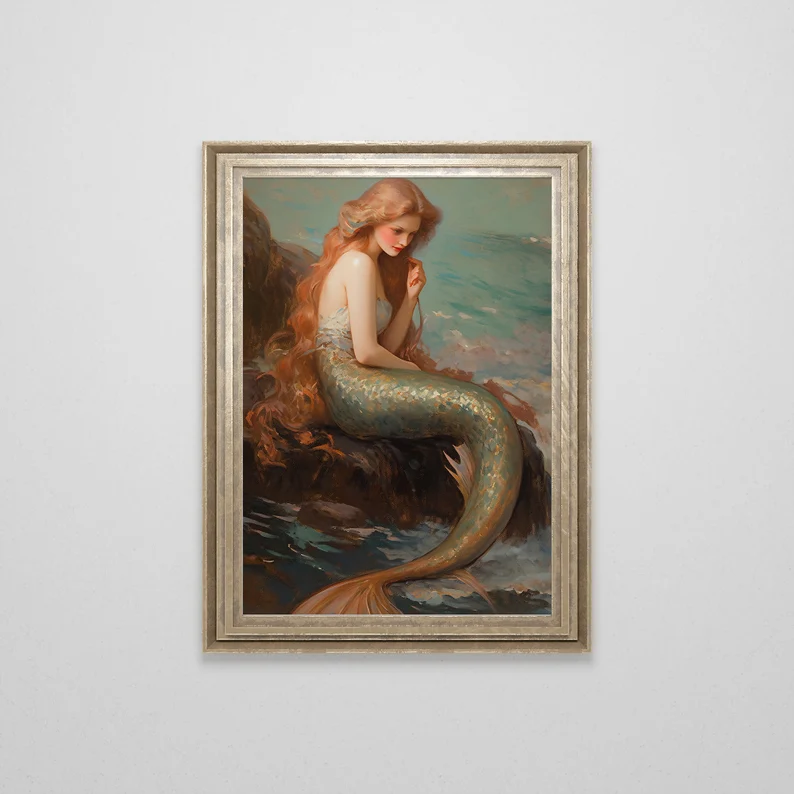
Mermaids, on the other hand, find their origins in worldwide folklore, including Near Eastern, African, European, and Asian cultures. Some of the earliest references come from ancient Assyria, in the story of the goddess Atargatis, who transforms herself into a mermaid out of shame for accidentally killing her human lover. Scholars speculate that this is the first mermaid myth there is.
Regardless of the exact origins, fish women were more popular across different cultures than bird women. For example, in Irish culture, there’s a creature similar to mermaids called merrows, while in Germany there’s a similar creature known as Loreley. In Africa, mami wata is a mermaid like water spirit, while in Thailand she is known as Suvannamaccha.
Because there are so many versions of mermaids, there isn’t a standardized depiction of them. Mermaids as we know them today, with their long flowing hair, gorgeous faces and amazing fish bodies, came much later.
Symbolism of Sirens and Mermaids

Today, while sirens and mermaids are often depicted in the same way, their symbolism couldn’t be more different. Sirens have always been viewed as mean and malevolent creatures. Unlike sirens, the symbolism of mermaids is more complex. Sometimes, they’re viewed as malevolent creatures who harmed sailors. At other times, they’re portrayed as benevolent beings, who save humans from storms and shipwrecks, helping them or falling in love with them. Here’s a breakdown of their differences.
Mermaids:
- Dual Nature: Mermaids symbolize duality, as they’re beings of both the sea and of land. They have the instincts of animals (fish) and the reasoning powers of humans. They can represent the meeting point between the mundane and the divine or the known and the unknown.
- Freedom and Independence: The mermaid’s ability to navigate the vast ocean represents freedom, independence, and a spirit of adventure.
- Feminine Power: Mermaids are typically depicted as beautiful and alluring creatures. They’re often linked with femininity, beauty, love, seduction, and desire.
- Fertility: In some cultures, mermaids represent fertility and abundance found within the ocean.
Sirens:
- Deception and Temptation: Sirens are commonly associated with deception and temptation, as they use their beautiful voices to lure sailors towards them, only to lead them to their doom. They symbolize the dangers of giving in to temptation.
- Destruction and Death: Those who fell for the tricks of sirens would almost always end up dead. This ties sirens to themes of destruction, death, and the inescapable nature of fate.
- Art and Inspiration: However, because of their captivating music, sirens are also associated with creativity and the beauty and power of art.
Why Did Sirens Turn into Mermaids?
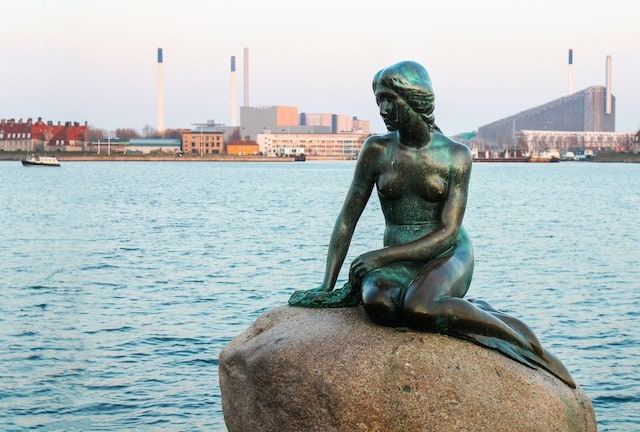
So, one thing is clear. Sirens and mermaids are not the same type of mythical creature. But at some stage their myths must have intermingled, and sirens became conflated with evil mermaids.
The reason for this change isn’t entirely clear, but one theory is that as stories and myths traveled through different cultures and time periods, they evolved and morphed to fit new cultural contexts.
The change occurred during the Middle Ages, when the siren transforms from its classical status as grotesque bird woman into an alluring mermaid. This transformation might have been influenced by the preexisting pagan symbols of water nymphs and deities, as well as the association of water with the unknown, danger, and the unconscious.
Sirens in Christian symbolism came to represent the temptations of the flesh and the sin of vanity. This changing perception of sirens in the Christian context can be seen in art and literature of the Middle Ages and the Renaissance.
In Dante’s Divine Comedy, for instance, a siren appears in a dream to symbolize sinful desires that can lead one astray from the divine path.
“The siren’s transition from a frightening bird-woman to a beautiful mermaid represents female beauty becoming monstrous. Throughout the Middle Ages sirens increasingly represented a male fear of female seduction, suggesting a growing fear of female sexuality.”
While sirens continue to embody danger and temptation, their transition under Christian influence also give them a sense of moral and spiritual peril, a far cry from their original portrayal in ancient Greek mythology.
Sirens and Mermaids Today
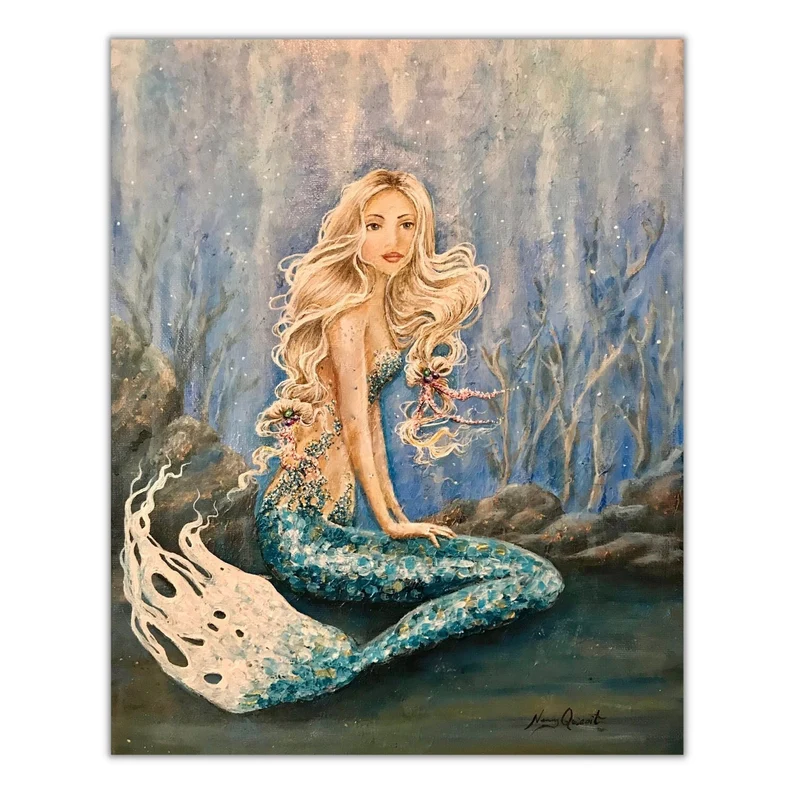
So how are sirens and mermaids viewed today? Mermaids remain the more popular version, with movies like Disney’s “The Little Mermaid,” which portrays mermaids as enchanting, friendly, and benevolent creatures.
Modern mermaids are often depicted as magical, romantic, and aspirational figures, symbolizing freedom, mystery, and a connection with nature, specifically the sea.
Sirens, on the other hand, have maintained some of their darker lore. In literature and media, sirens are still depicted as dangerous and seductive creatures who use their enchanting voices to lure unsuspecting victims to their doom.
Wrapping Up
Even though some confuse the two, sirens and mermaids are indeed different creatures with separate histories and mythological backgrounds. While sirens have a distinctly Greek origin, mermaids can be found around the world in various mythologies.
Related articles
Who Were the Greek Sirens: Bird Women or Mermaids?
The Merrow – Irish Mermaids or Something More?
Nereids: The Sea Nymphs of Greek Mythology
20 Unique Greek Mythological Creatures and Their Power
Symbolism of the Ocean: 14 Powerful Meanings





